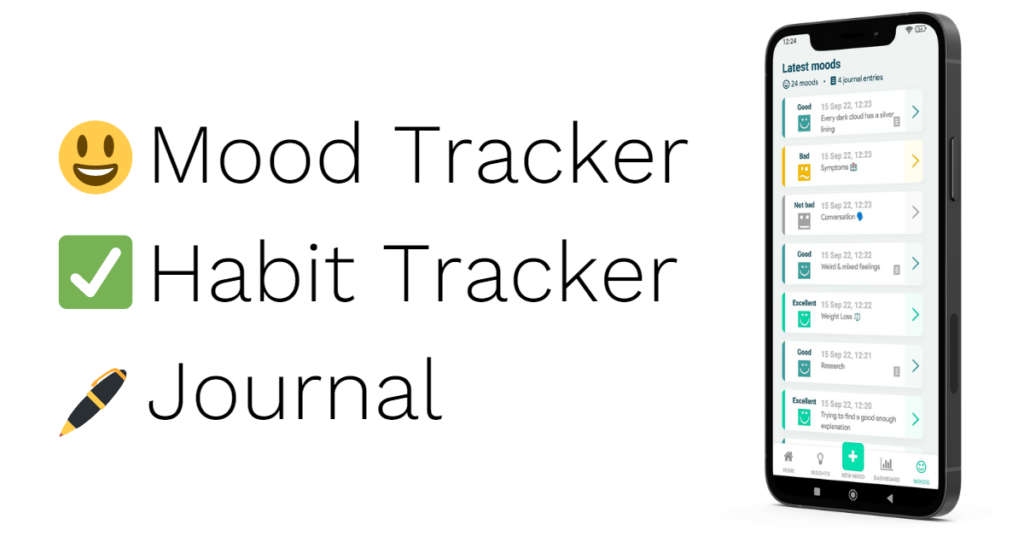Although journaling and habit tracking are widespread practices, the practice of tracking your mood has yet to gain the fame and place it deserves among people’s daily habits. In this article, we will explain why mood tracking is such a useful tool in your self-development, emotional balance and mental health kit – by looking together at 5 real-life examples of cases.
1. Daily Habits
The power of habits is now well-known and well-established in the world of self-improvement, thanks to bestselling books like Atomic Habits and The Power of Habit. But how about tracking how these activities make you feel, and the impact they have on your mood?
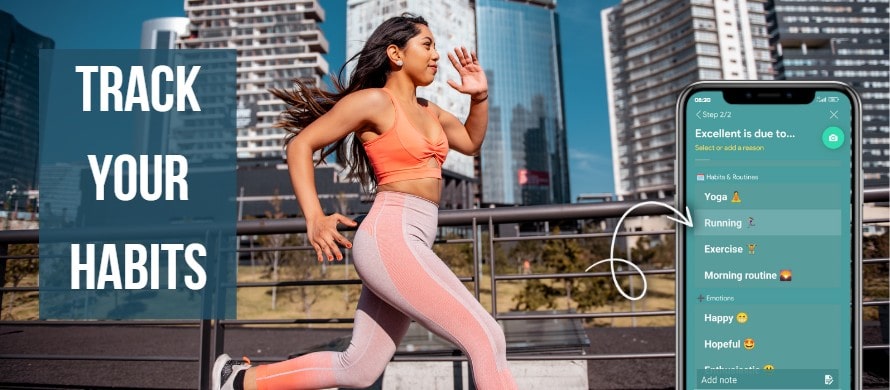
Here how to do it:
- Make a list of your habits: what do you want to implement – or have already implemented – in your daily routine? Is it meditation, cooking a healthy meal, running, drinking water, feeling gratitude, journaling, stretching, lifting weights or practicing yoga?
- Keep a record of your habit streaks: A mood tracker also tracks activities and habits. Every time you complete a certain habit, you can also record when you did it and how you felt. You can also set a reminder for your activity if you want to make sure you are consistent.
- Look at your trends: Measure how you feel before and after doing these habits, and how they impact your mood.
If your mood tracker app has a microjournaling function, you can also record quick thoughts such as: what has worked / what hasn’t worked or what insights you had.
2. Morning Routine
Many authors, success coaches and self-help gurus swear by this method to kickstart your day. However, did you know that there are many cases of people who have ended up more tired after their morning routine, wanting to go back to sleep or feeling stressed out because of the way they have implemented it?
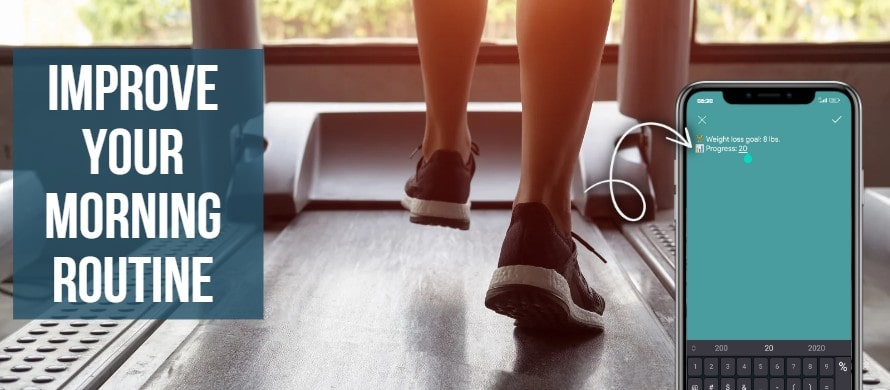
You cannot improve what you cannot measure
What works for some people will not work for others. Therefore, it is very important to measure how your morning routine is impacting the quality of your life.
Track your moods before, maybe during and definitely after your morning routine, to check how it makes you feel. Make a quick note of what you have gained, and what you want to improve about your routine.
3. Womens Health: Period Tracking
Periods bring hormonal changes and are known for impacting your moods and emotions. By tracking your cycle and PMS symptoms, you can gain insight into how you feel a week or two before and during the period days.
Mood tracking will allow you to:
- Manage your symptoms better.
- Understand your cycle: while some women have a precise cycle, for others it can range anywhere between 21 to 40 days.
- Manage your activities: when your estrogen levels are at their peak, you will feel great, so you can plan work meetings or events, while during the lower mood cycles you can rest and do things that do not require as much energy.
- Manage your workouts: it is better to intensify your workouts when you feel the most energetic, and knowing your peaks and valleys can give you great power over your workouts.

Technology can be empowering when it helps us better deal with our challenges and emotions. There are many apps created specifically to track your period. However, a mood tracker app can also help you track the way you feel around your period and make great decisions.
4. Bipolar Disorder
According to Wikipedia, bipolar disorder is a mental disorder characterized by periods of depression and periods of abnormally elevated mood that last from days to weeks each.
If the elevated mood is severe or associated with psychosis, it is called mania; if it is less severe, it is called hypomania.
During mania, an individual behaves or feels abnormally energetic, happy or irritable, and they often make impulsive decisions with little regard for the consequences. There is usually also a reduced need for sleep during manic phases. During periods of depression, the individual may experience crying and have a negative outlook on life and poor eye contact with others.
The risks associated with mania include: irresponsible behavior, compulsive spending, burnout and many more things that have negative consequences on your health, finances or emotional balance. Depression comes with the risk of suicide.
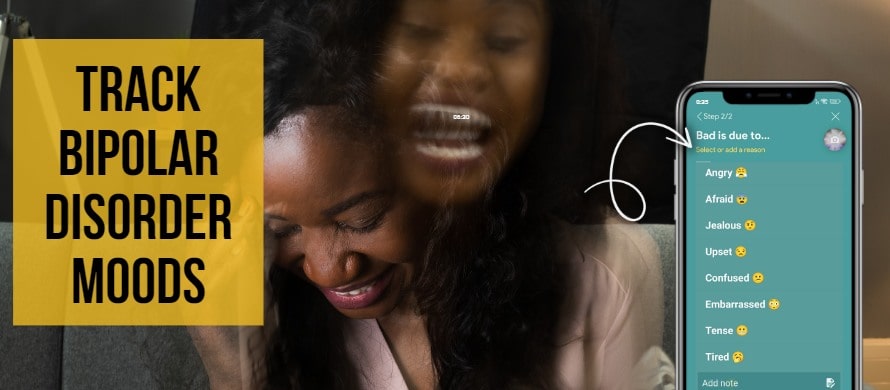
Mood tracking will allow you to:
- Become more mindful of your states, and know when you are approaching a period of mania.
- Track the effects of your medication: some people have to try more than one approach to treatment, and your mental health expert might recommend becoming mindful and tracking the effects of the treatment. A mood tracker can help you do just that, on your smartphone
- Manage risks: when you know the consequences of risky behavior, you can implement protocols and set limits and boundaries with yourself, in order to avoid the negative consequences.
5. Borderline Disorder
According to Wikipedia, Borderline personality Disorder (BPD) is a personality disorder characterized by a long-term pattern of unstable interpersonal relationships, distorted sense of self, and strong emotional reactions.
Those affected often engage in self-harm and other dangerous behaviors, often due to their difficulty with returning their emotional level to a healthy or normal baseline. They may also struggle with a feeling of emptiness, fear of abandonment, and detachment from reality.Symptoms of BPD may be triggered by events considered normal to others.
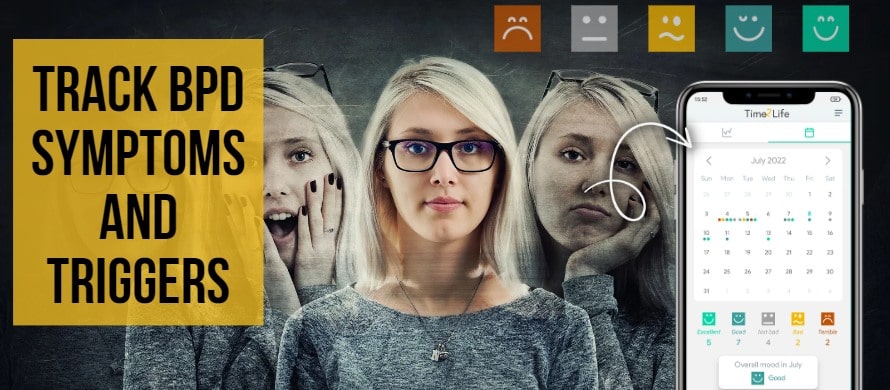
Mood tracking will allow you to:
- Discover and manage your triggers
- Managing your mood swings
- Therapy Aid: Unload dysfunctional thoughts thoughts and rumination through micro-journaling
6. Depression
Depression is a mental state of low mood and aversion to activity, which affects more than 280 million people of all ages (about 3.5% of the global population). The experience of depression affects a person’s thoughts, behavior, motivation, feelings, and sense of well-being.The core symptom of depression is said to be a loss of interest or a loss of feeling of pleasure in certain activities that usually bring joy to people.
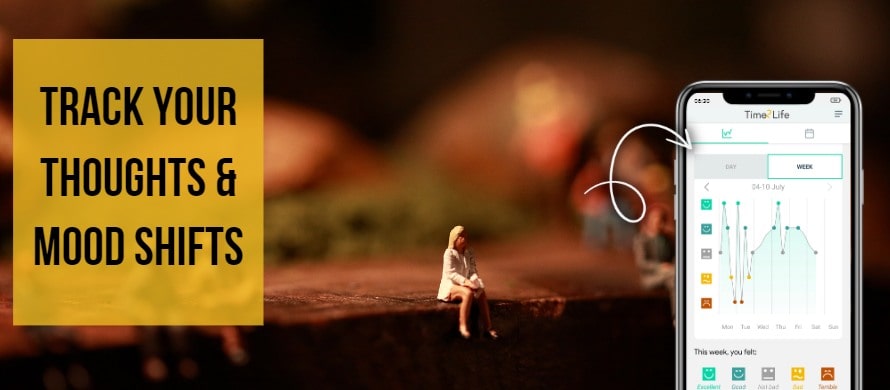
Tracking will allow you to:
- Manage the thoughts that create your depression and keep itdepression runnign. Psychologists call these thougts ”rumination”
Conclusion: use mood tracking to track and understand anything that is relevant to your life
These are just five examples out of a myriad of possibilities. Ask yourself: what area of your life needs to be understood and improved? Give mood tracking a chance for 10 days and see if you fall in love with this practice, like many people have.
In the next article we will look at other interesting case studies.
If you would like to experience mood tracking and microjournaling for yourself, then just download the Time2Life App at:
